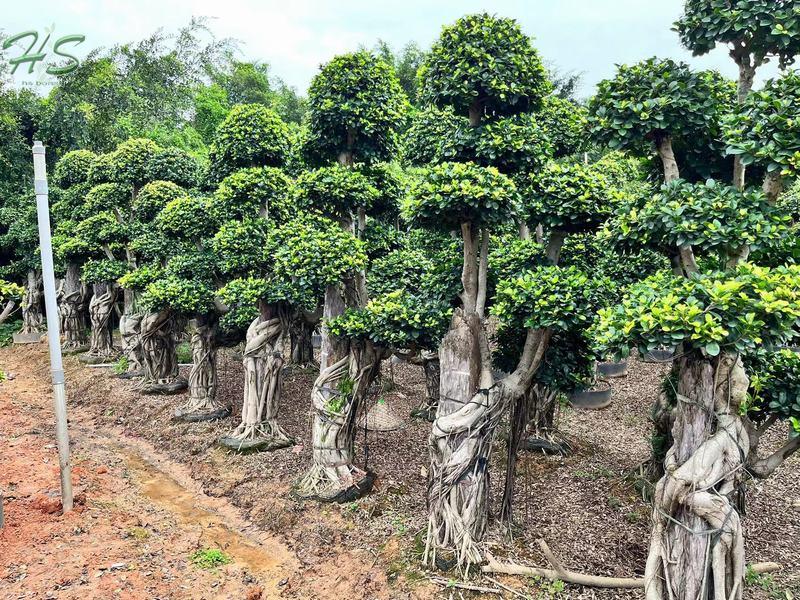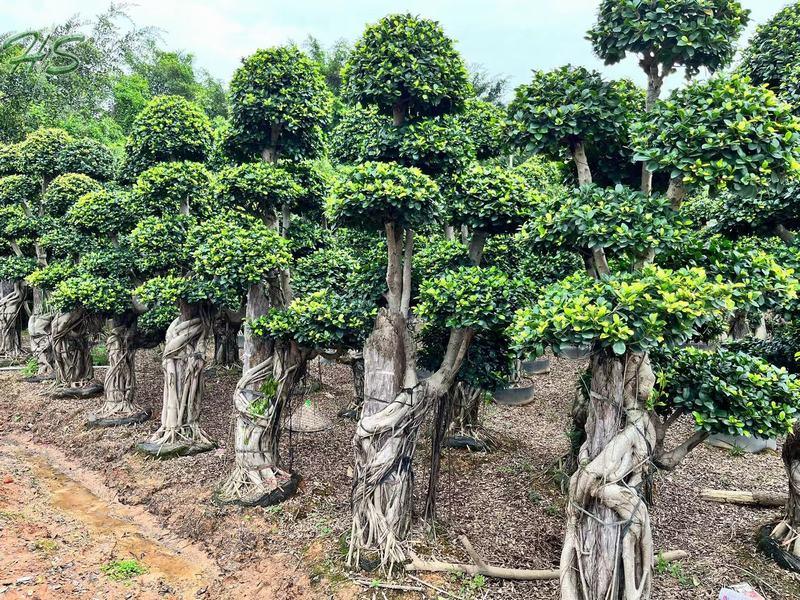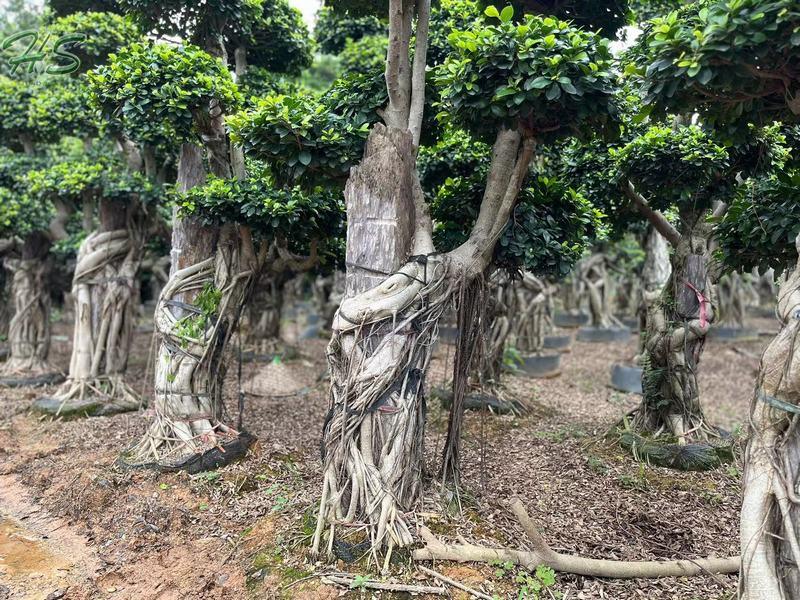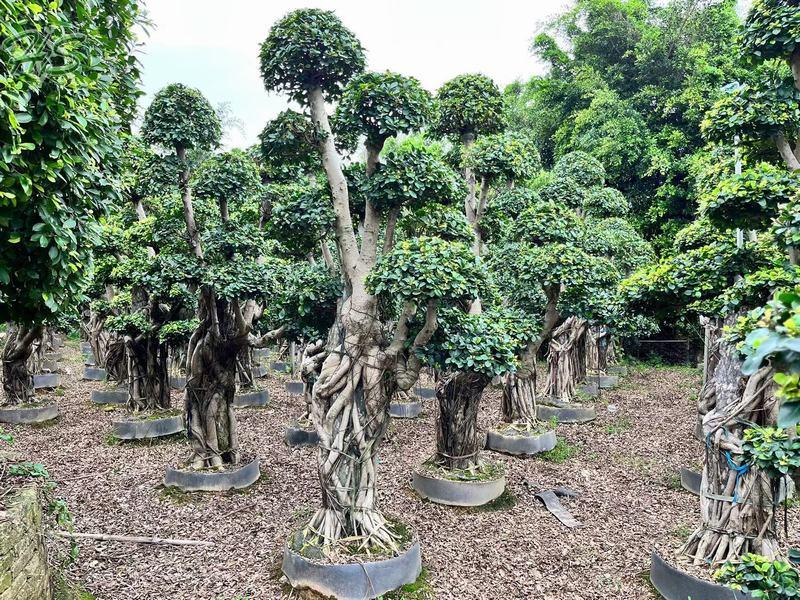Ficus microcarpa also known as the Chinese banyan, is a popular net shape landscaping plant that provides an eye-catching focal point to any outdoor space. With its sturdy and resilient trunk, this tree can grow to impressive heights, creating an instant sense of grandeur.
Item NO.:
HSDSPayment:
T/TProduct Origin:
ChinaColor:
GreenShipping Port:
Xiamen portLead Time:
7-10day
The Art of the Rock-Planted Ficus microcarpa Bonsai
The Ficus microcarpa, commonly known as the Chinese Banyan or Ginseng Ficus, is one of the most popular and resilient species in the world of bonsai. When this hardy tree is artistically trained to grow over and embrace a rock, it creates a breathtaking style known as "Root-over-Rock" (Sekijoju in Japanese) or a Rock-Planted Bonsai. This is more than just a potted plant; it is a living sculpture that tells a powerful story of survival, tenacity, and harmony with nature.
The Aesthetic and Symbolism
A Rock-Planted Ficus microcarpa bonsai depicts a dramatic scene from the wild. It mimics trees that stubbornly take root in harsh, rocky landscapes, clinging to life against all odds. The visual contrast is striking:
The Rock: Represents the unyielding, ancient forces of nature—the mountain cliff or the rugged terrain.
The Tree: Symbolizes persistent life and adaptability. Its roots, like determined fingers, grip the rock's surface, searching for nourishment in the soil below. The lush, glossy green canopy atop represents the triumph of life.
This combination creates a miniature landscape of profound beauty and strength, embodying the idea that even in the most challenging environments, life can not only survive but thrive with grace.
Key Characteristics of the Ficus microcarpa for this Style
Vigorous Root System: This tree is famous for its aggressive and fast-growing roots. This makes it ideally suited for the root-over-rock technique, as the roots can be easily trained to grow over the contours of the stone.
Hardiness and Adaptability: It is highly tolerant of indoor conditions, forgiving of occasional lapses in care, and responds well to pruning and training, making it an excellent choice for both beginners and experts.
Small, Glossy Leaves: The small size of its leaves is perfectly in scale with the miniature aesthetic of bonsai, creating a believable and finely detailed tree scene.
The Creation Process
Creating this living art form is a patient, multi-year process:
Selection: A suitable rock with interesting texture, grooves, and stability is chosen.
Initial Planting: The young tree is positioned on the rock, and its roots are carefully draped over the surface. The roots and rock are then buried together in a deep pot for a year or more.
Training: During this buried period, the roots thicken and adapt to the shape of the rock.
Revealing the Structure: Gradually, the soil level is lowered with each repotting, slowly exposing the rock and the intricate root system that now clings to it. The exposed roots are eventually trained to look like a sturdy, natural trunk.
Care and Maintenance
Light: Thrives in bright, indirect light.
Watering: Water thoroughly when the topsoil feels slightly dry.
Pruning: Regular pruning of the branches and leaves is essential to maintain the desired shape and encourage finer ramification. Root pruning is done during repotting.
In conclusion, a Rock-Planted Ficus microcarpa Bonsai is a captivating masterpiece. It is a testament to the artist's vision and the tree's enduring spirit, offering a daily reminder of nature's powerful elegance and resilience right in your home.
Take care tips
|
Item name: |
Ficus Microcarpa bonsai By Stone |
|
Common name: |
Ficus tree, Monroe Ficus, Figs, chinese banyan, chinese bonsai |
|
Standard: |
Ficus microcarpa lantern bonsai potted small size |
|
Temperature: |
The best temperature for ficus growing is 18-35 ℃. In winter, the ficus will be frost when the temperature under 10 ℃. Shortage of sunshine will make the leaves yellow and undergrowth |
|
Water: |
We suggest feed ficus bonsai enough water is necessary. Soil should be always wet. In summer, leaves should be sprayed water as well. |
|
Sunlight: |
The ficus likes the full sunlight. |
|
Fertilizer: |
Liquid feed during active growth in late spring and summer. higher frequency watering while feeder to avoid drug injury. |
|
Packing: |
Packed with cocopeat and then into container |
|
Delivery time: |
7-14 days after confirmed for stock quantity |
Product Overview



